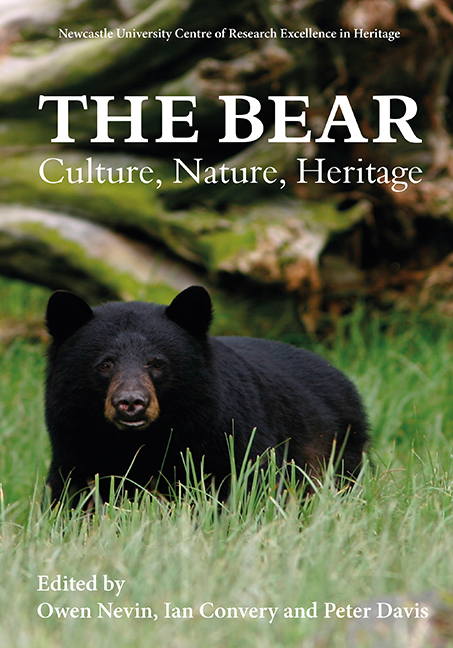Book contents
- Frontmatter
- Contents
- List of Illustrations
- Acknowledgments
- List of Abbreviations
- Foreword: The Bear: A Cultural and Natural Heritage
- Introduction: What is a Bear?
- Bear-People Interactions
- Bears in the Public Gaze
- Bear Biology, Management and Conservation
- Afterword: “It's Me Bear”: Reflections on a Unique Career Working with Bears
- List of Contributors
- Index
- Previous titles
Introduction: What is a Bear?
Published online by Cambridge University Press: 21 March 2020
- Frontmatter
- Contents
- List of Illustrations
- Acknowledgments
- List of Abbreviations
- Foreword: The Bear: A Cultural and Natural Heritage
- Introduction: What is a Bear?
- Bear-People Interactions
- Bears in the Public Gaze
- Bear Biology, Management and Conservation
- Afterword: “It's Me Bear”: Reflections on a Unique Career Working with Bears
- List of Contributors
- Index
- Previous titles
Summary
Bears are iconic animals; they are totemic of the non-human world, symbols of multiple human-cultural manifestations of nature. In human culture, bears have played a number of roles; gods, monsters, kings, fools, brothers, lovers, dancers, medicine, food and pest. They are seen as protectors of the forest; symbols of masculinity; the strength of a fighter, football team or army; a comfort for our children; political bargaining chips; an economic indicator; the first casualty/poster boy of global warming; symbols for conservation; worthy adversaries for a hunter's rifle; prize photography subjects for nature tourists or the last bastion of wilderness. Bears offer a unique insight into a multiplicity of paradigms that explore human-non-human animal relationships. Bear totems reinforce and maintain our connection to the natural world.
Bears and humans have shared a similar geographic journey; as we colonised the world from Africa, bears did so from Europe (albeit a few thousand years earlier), with the brown bear being found most frequently where our species also found hospitable conditions. The ecology of (early) Homo sapiens and Ursus arctos (brown bear) are matched closely: dietary requirements, habitat choice and environmental tolerances. There are many stories that permeate from the past describing our ancestral eaves-dropping on bear foods (and medicines). There are stories of cultures that gathered berries in the same fields as bears and fished on the same rivers: a time when bears and people respected one another's personal space. This is true of some cultures to the present day.
Myths, legends and folklore have informed generations of our and bears’ place in the world. Oral histories passed through generations and through ever-changing norms of communication. From imagined fireside tales to blue-chip documentaries in the 21st century, bears have always been good for us to reflect upon; to ponder our lives in relation to their world, to define our own world, one seemingly at odds to the lives of the other. Bears interweave with many of our cultures.
Cave paintings, sculptures, stories of half-men and monsters, how we perceive bear species can have a huge impact on their survival. Our attitudes towards animals, people and places will shape the face of our planet, our climate and our survival.
- Type
- Chapter
- Information
- The Bear: Culture, Nature, Heritage , pp. 1 - 10Publisher: Boydell & BrewerPrint publication year: 2019



